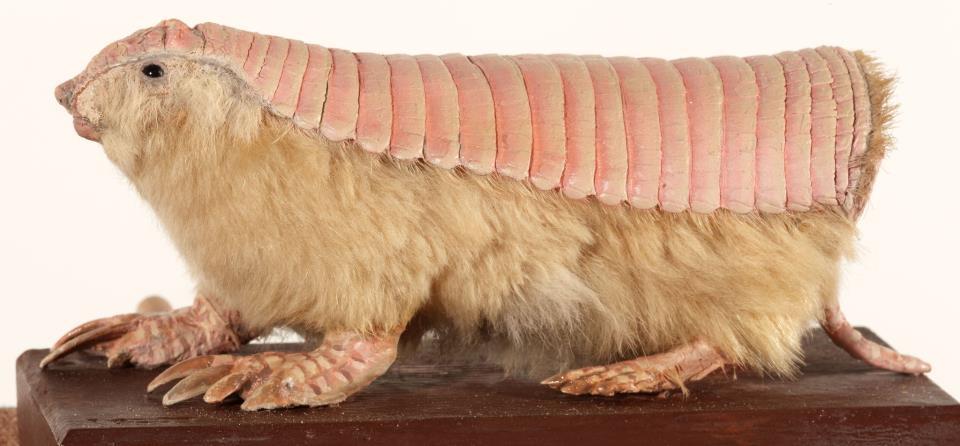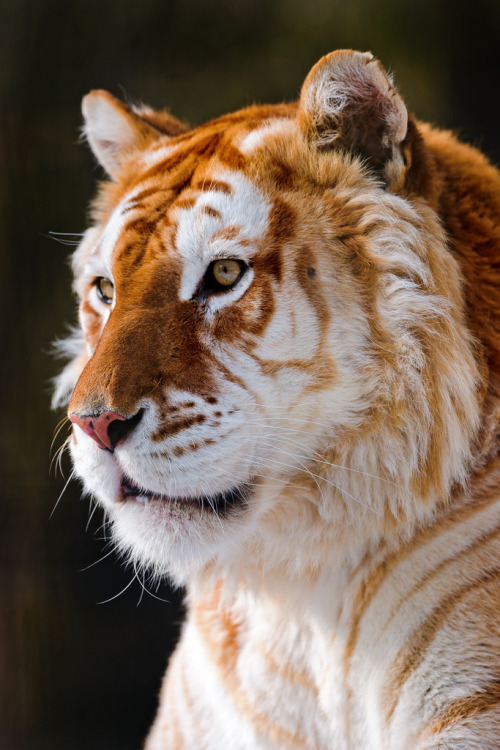SPIDERS AND MOSS
Sunday, September 8, 2013
The Peacock Spider
The Peacock spider or Gliding spider (Maratus volans) is a species of jumping spider.
The species name means "flying" in Latin, because it was at first thought that the
flaps help the spider in gliding. The red, blue and black colored males have flap-like
extensions of the abdomen with white hairs that can be folded down. They are used
for display during mating: the male raises his abdomen, then expands and raises the
flaps so that the abdomen forms a white-fringed, circular field of color.
Thursday, July 25, 2013
The Whole 2-Yards: Giraffe Neck Growth Patterns

The giraffe’s neck actually contains the same number of cervical (neck) vertebrae
found in nearly all other mammals. (For a discussion of the very few mammals
to deviate the magic number of seven cervicals, see this Endless Forms post).
The rate at which these vertebrae develop relative to other parts of the giraffe’s
body, including its head and overall body mass, however, has not been adequately
explored.
More at: www.scilogs.com/endless_forms
Nat Geo Amatuer Photo Contest Winner

Overall winner of the National Geographic Best Underwater Pictures 2013.
Check out the runner-ups here: Nationalgeographic.com/contest
Tuesday, July 16, 2013
Giant Squid First Time on Film

Giant squid, like all squid, have sharp beaks, not unlike those of a parrot. They use them for biting into the fish and invertebrates that they eat. In the stomach of a Sperm whale, those beaks can accumulate. In fact, Sperm whales are often found to have thousands of the beaks in their stomachs!
But the sharp beaks irritate the stomach lining. As a reaction to the irritation of all the squid beaks, the whale produces in its intestines a cholesterol derivative which has come to be called ambergris. First discovered in ancient times as a substance of unknown origin which would wash ashore, it wasn't until the whaling era that the true source of the material was found.
When it is first removed from a whale, ambergris is a thick, black, foul-smelling liquid. Later, it hardens into a waxy aromatic substance. When heated, it produces a pleasant earthy aroma. It was used as a fixative in perfumes because it causes the scent of perfume to last much longer. The Greeks, Chinese, Japanese and Arabs have all held ambergris in high regard. Today we have synthetic substances which accomplish the same thing, so there is no need to hunt whales for it, and trade in ambergris is now banned worldwide by treaty. Yet, every once in a while a rare piece will still wash ashore somewhere.
Labels:
black and white,
creature,
deep sea,
strange,
tentacles
Wednesday, May 29, 2013
Tuesday, May 21, 2013
Phantom Limbs

Salamanders can grow back lost limbs, and scientists have now discovered
that immune cells are the key to this regeneration, taking us a step closer to being
able to heal human tissue in the same way. The researchers found that cells known
as macrophages are crucial to the salamanders' unique healing abilities, and could
one day help treat spinal cord and brain injuries in humans.
More here: www.sciencealert.com
Thursday, May 2, 2013
Lygodium Spider Moth
Monday, April 29, 2013
Miniature Paintings By Hasan Kale


Turkish painter Hasan Kale paints on every small object he finds. A needle,
a seed, a butterfly wing or a lump sugar turns into a canvas in his hands. He
paints Istanbul panoramas, the city which inspires him, on these small objects.
His art is inspired by Mohammed of the Black Pen’s brush technique and
Levni’s color harmony.
Friday, April 19, 2013
Friday, April 12, 2013
Monday, March 11, 2013
Pink Fairy Armadillo

The pink fairy armadillo (Chlamyphorus truncatus) or pichiciego is the smallest species of armadillo (mammals of the family Dasypodidae, mostly known for having a bony armor shell). It is found in central Argentina, where it inhabits dry grasslands and sandy plains with thorn bushes and cacti.
It is a nocturnal animal. It burrows small holes near ant colonies in dry soil, and feeds mainly on ants and ant larvae near its burrow. Occasionally, it feeds on worms, snails, insects and larvae, or various plant and root material.
The pink fairy armadillo spends much of its time under the ground, as it is a "sand swimmer" similar to the golden mole or the marsupial mole. It uses large front claws to agitate the sand, allowing it to almost swim through the ground like it is water. It is torpedo-shaped, and has a shielded head and back.
Source: wikipedia.com
Sunday, March 10, 2013
Thursday, March 7, 2013
Cordyceps Parasitic Fungus

This unfortunate arachnid is infected with Cordyceps, a parasitic fungus that
replaces its host's tissue with its own.
Cordyceps fungi invades its hosts (mainly arthropods), and its mycelium
eventually replaces the host's tissue. Once the arthropod is dead, cylindrical
or branching growths emerge from the creature's dead body. Some species
also have mind-control capabilities, convincing the host to travel to a place
where the fungus will find optimal growth conditions before the host dies.
Monday, February 11, 2013
Thursday, February 7, 2013
Subscribe to:
Posts (Atom)







